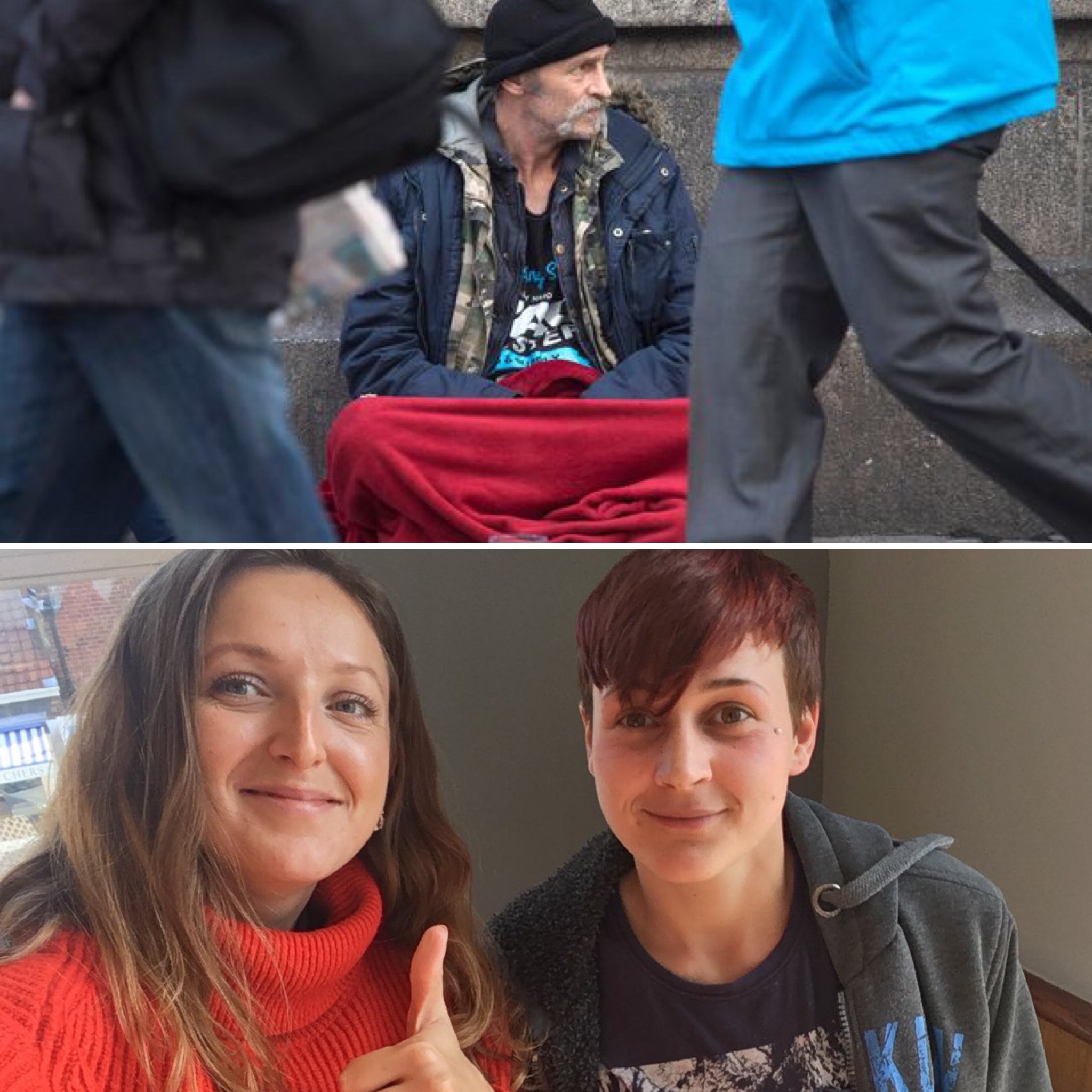
There are valid and even evidence-based reasons for using positive imagery about people. Most importantly though, it’s about respect and breaking the stigma.
It’s understood that charities are facing tough times and need to raise money. I’m a member of the public and tax-payer too and will choose carefully how I make donations.
Here are some ways our sector fundraises and I’d love to know how you feel about them.
Chugging: To be lured in the high street by a rattling tin and a smile in a fluorescent bib has to be my least favourite means of making donations. Partly because I’ll decide who and when I want to talk to someone and as an introvert would rather stay in control of that (same with door knocking). I’ve said before and I’ll say it again, I hope when I’m on my uppers, I’m worth more to society than that. Ironically they stand alongside beggars, metaphorically rattling their tin too.
Soup kitchens: Then there’s initiatives like the soup kitchen. Established and run relentlessly by incredibly well-meaning people wanting to ameliorate the suffering of people. Perhaps a bit Victorian for my personal taste.
Sleep Outs: Marketed incredibly effectively by corporate teams, amazing leverage of the business sector and astonishingly successful in raising unrestricted funds. Almost always they are accompanied by those ubiquitous pictures of people in hoodies and sleeping bags. Sleeping for one night in a sleeping bag is neither a true experience of homelessness (and they go to great pains to say this, to be fair), or a fair representation of what homelessness really is or often the scope of their work.
You’ll know by now that homelessness comes in myriad forms, with rough sleeping being the tip of a very large and complex iceberg. Imagery should therefore be myriad too. Pictures of people who no longer look like the rest of society (often ragged beards, missing teeth and this mermaid effect of a permanent sleeping bag) desensitise us and rid us of the opportunity for a real debate about homelessness.
By seeing the homeless in this limited way they become ‘other’, not like us and defined by this one (possibly fleeting) moment in their lives. This negative imagery promotes stigma, prejudice and takes us back to Victorian initiatives that make lots of us feel better for helping. There’s no doubt that money gets raised, some of it gets well spent and some lives are improved.
However, this should never be at the expense of someone’s dignity, right to respect and equal treatment.
Telling nuanced stories is difficult and doesn’t grab headlines. The fact is the route to homelessness is nuanced and could happen to any of us. With that in mind how would you want to be represented? We don’t even post the occasional picture on our social media of us looking anything less than perfect, so why would we do that to someone else?
So if/when (heaven forbid) something happens to you, would your rather be represented as someone with some positive past, hope for the future and smiling or looking your absolute worst?
Donation points: This week in Norwich I was pleased see the BID launch their donation point, #NorwichStreetAid to enable shoppers and others to donate real money to go into training and skills development as well as useful household items and even people giving their time, though I’m not sure how this works.
You’ll know by now what I’m going to say. It’s still not prevention and it’s still ‘them and us’. Most people never ever have to get into those situations. It’s incredibly important we hang onto that belief as we see homelessness skyrocket and assume that it’s a normal part of life. It’s not. It’s preventable and a governmental and policy choice.
So whatever way you choose to help, and you are, please find a way that doesn’t just ease your conscience or fill a belly for tonight, but one that you feel confident has treated someone with respect and dignity.

